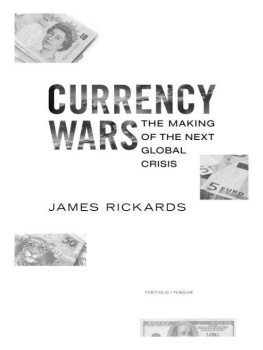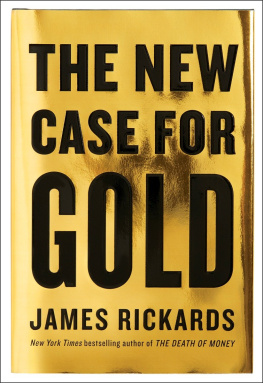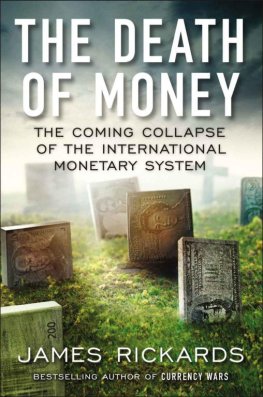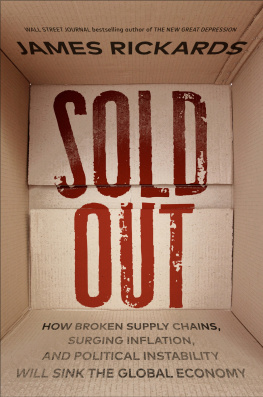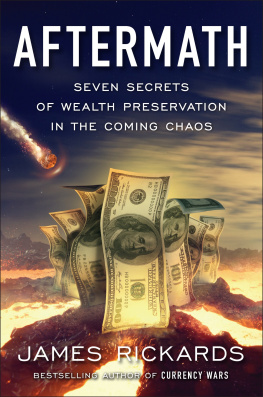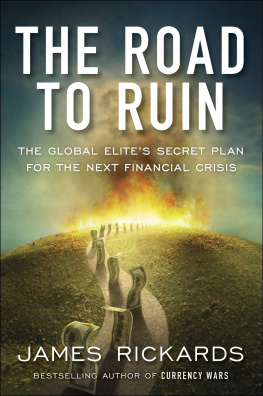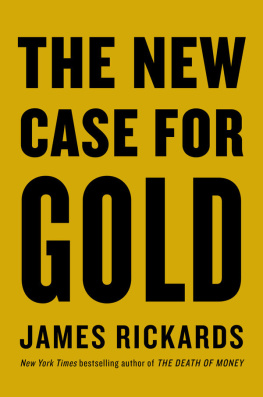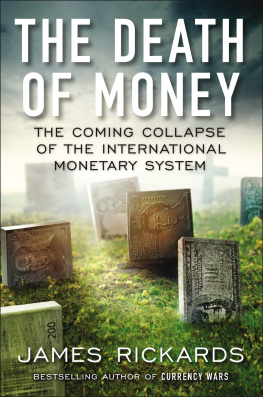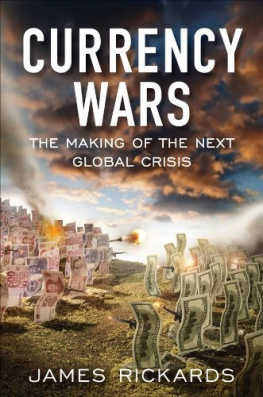Table of Contents
PORTFOLIO / PENGUIN
Published by the Penguin Group
Penguin Group (USA) Inc., 375 Hudson Street,
New York, New York 10014, U.S.A.
Penguin Group (Canada), 90 Eglinton Avenue East, Suite 700,
Toronto, Ontario, Canada M4P 2Y3
(a division of Pearson Penguin Canada Inc.)
Penguin Books Ltd, 80 Strand, London WC2R 0RL, England
Penguin Ireland, 25 St Stephens Green, Dublin 2, Ireland
(a division of Penguin Books Ltd)
Penguin Books Australia Ltd, 250 Camberwell Road, Camberwell,
Victoria 3124, Australia
(a division of Pearson Australia Group Pty Ltd)
Penguin Books India Pvt Ltd, 11 Community Centre, Panchsheel Park,
New Delhi110 017, India
Penguin Group (NZ), 67 Apollo Drive, Rosedale, Auckland 0632,
New Zealand (a division of Pearson New Zealand Ltd)
Penguin Books (South Africa) (Pty) Ltd, 24 Sturdee Avenue,
Rosebank, Johannesburg 2196, South Africa
Penguin Books Ltd, Registered Offices:
80 Strand, London WC2R 0RL, England
First published in 2011 by Portfolio / Penguin, a member of Penguin Group (USA) Inc.
Copyright James Rickards, 2011
All rights reserved
Library of Congress Cataloging-in-Publication Data
Rickards, James.
Currency wars : the making of the next global crisis / James Rickards. p. cm.
Includes bibliographical references and index.
ISBN : 978-1-101-55889-8
1. Currency crises. 2. Foreign exchange. 3. Financial crises. I. Title.
HG3851.3.R53 2011
332.4dc23
2011026906
Set in Sabon LT Std
Without limiting the rights under copyright reserved above, no part of this publication may be reproduced, stored in or introduced into a retrieval system, or transmitted, in any form or by any means (electronic, mechanical, photocopying, recording, or otherwise), without the prior written permission of both the copyright owner and the above publisher of this book.
The scanning, uploading, and distribution of this book via the Internet or via any other means without the permission of the publisher is illegal and punishable by law. Please purchase only authorized electronic editions and do not participate in or encourage electronic piracy of copyrightable materials. Your support of the authors rights is appreciated.
While the author has made every effort to provide accurate telephone numbers and Internet addresses at the time of publication, neither the publisher nor the author assumes any responsibility for errors, or for changes that occur after publication. Further, publisher does not have any control over and does not assume any responsibility for author or third-party websites or their content.
http://us.penguingroup.com
For Ann, Scott, Ali, Will and Sallywith love and gratitude,
and to the memory of my father, Richard H. Rickards,
with the Old Breed in Peleliu, Okinawa and China
And when the money failed in the land of Egypt, and in the land of Canaan, all the Egyptians came unto Joseph, and said, Give us bread: for why should we die in thy presence? For the money faileth.
Genesis 47:15, King James Version
PREFACE
O n August 15, 1971, a quiet Sunday evening, President Richard Nixon took to the airwaves, preempting the most popular television show in America, to announce his New Economic Policy. The government was imposing national price controls and a steep surtax on foreign imports and banning the conversion of dollars into gold. The country was in the midst of a crisis, the result of an ongoing currency war that had destroyed faith in the U.S. dollar, and the president had determined that extreme measures were necessary.
Today we are engaged in a new currency war, and another crisis of confidence in the dollar is on its way. This time the consequences will be far worse than those confronting Nixon. The growth in globalization, derivatives and leverage over the past forty years have made financial panic and contagion all but impossible to contain.
The new crisis will likely begin in the currency markets and spread quickly to stocks, bonds and commodities. When the dollar collapses, the dollar-denominated markets will collapse too. Panic will quickly spread throughout the world.
As a result, another U.S. president, possibly President Obama, will take to the airwaves and cyberspace to announce a radical plan of intervention to save the dollar from complete collapse, invoking legal authority already in place today. This new plan may even involve a return to the gold standard. If gold is used, it will be at a dramatically higher price in order to support the bloated money supply with the fixed quantity of gold available. Americans who had invested in gold earlier will be confronted with a 90 percent windfall profits tax on their newfound wealth, imposed in the name of fairness. European and Japanese gold presently stored in New York will be confiscated and converted to use in the service of the New Dollar Policy. No doubt the Europeans and Japanese will be given receipts for their former gold, convertible into New Dollars at a new, higher price.
Alternatively, the president may eschew a return to gold and use an array of capital controls and global IMF money creation to reliquify and stabilize the situation. This IMF global bailout will not be in old, nonconvertible dollars but in a newly printed global currency called the SDR. Life will go on but the international monetary system will never be the same.
This isnt far-fetched speculation. It has all happened before. Time and again, paper currencies have collapsed, assets have been frozen, gold has been confiscated and capital controls have been imposed. The United States has not been immune to these acts; in fact, America has been a leading advocate of dollar debasement from the 1770s to the 1970s, through the Revolution, the Civil War, the Great Depression and Carter-era hyperinflation. The fact that a currency collapse has not happened in a generation just implies that the next crash is overdue. This is not a matter of guessworkthe preconditions are already in place.
Today, the U.S. Federal Reserve, under the guidance of Chairman Ben Bernanke, is engaged in the greatest gamble in the history of finance. Beginning in 2007, the Fed fought off economic collapse by cutting short-term interest rates and lending freely. Eventually rates reached zero, and the Fed appeared to be out of bullets.
Then, in 2008, the Fed found a new bullet: quantitative easing. While the Fed describes the program as an easing of financial conditions through the lowering of long-term interest rates, this is essentially a program of printing money to spur growth.
The Fed is attempting to inflate asset prices, commodity prices and consumer prices to offset the natural deflation that follows a crash. It is basically engaged in a game of tug-of-war against the deflation that normally accompanies a depression. As in a typical tug-of-war, not much happens at first. The teams are evenly matched and there is no motion for a while, just lots of tension on the rope. Eventually one side will collapse, and the other side will drag the losers over the line to claim victory. This is the essence of the Feds gamble. It must cause inflation before deflation prevails; it must win the tug-of-war.



